I’ve often heard from dietitians and health food aficionados that consuming microgreens and baby greens provide more nutrition than their full grown counterparts. Is that true? In a 2021 published study of two greens - spinach and roselle - researchers discovered that these plants - when harvested within 20 days of sowing - have some critical nutritional benefits greater than the full grown plant, according to the National Library of Medicine:
“Compared to field grown mature foliage, greenhouse-grown micro/baby-greens were lower in digestible carbohydrates and CA (calcium) but higher in digestible protein, P (phosphorus), K (potassium), Mg (magnesium), Fe (iron), Mn (manganese), and Zn (zinc).”
From the National Library of Medicine (Nov. 2021): Nutrient Content of Micro/Baby-Green and Field-Grown Mature Foliage of Tropical Spinach (Amaranthus sp.) and Roselle (Hibiscus sabdariffa L.)
So, for certain nutritive boosts, nature’s “fast food” (greens harvested at microgreen or baby green stage) is the way to go. Better yet, it’s quick from the garden to the plate, reaching cutting stage in 10 to 20 days after sowing in optimum conditions and temperatures.
In today’s “Beyond the Garden Basics” newsletter podcast (above), Master Gardener Gail Pothour discusses how to grow and harvest microgreens, and how they can be used in various dishes.
Below, Renee Shepherd shares her secrets for growing and harvesting baby greens, perfect for the freshest salad and other recipes. This is a transcript of a conversation we had with Renee, back in Episode 282 of the Garden Basics with Farmer Fred podcast.
THE CUT AND COME AGAIN FOOD GARDEN
Farmer Fred
One of the healthiest garden plants that you can grow our greens. But if you live in a hot climate, maybe you're limited to only growing greens during the cool season. Or if you live in a cold climate, it's your summer crop. But because greens are so healthy, you should be able to grow them year round. And, you know something? You can, with the advice of our guest today. It’s Renee Shepherd, the founder of Reneesgarden.com. She is widely regarded as a pioneering innovator in introducing international vegetables, flowers, and herbs to home gardeners and gourmet restaurants. She founded the Shepherd's Garden Seeds back in 1985. And she sold the company later on, and then established Renee's Garden to do what she likes best: searching out the very best seeds from around the world, testing them in her own garden, cooking and developing recipes around their unique characteristics, and sharing them with other gardeners. I've been a Renee's customer for years and years. I love her choices and introductions, especially the Sunset Mix sweet pepper. Renee is the one who gave me a tip a few years ago when I was bemoaning the lack of cilantro to make salsa in the summertime. Cilantro, here in USDA zone nine, is basically a cool season crop. But you'd like to have some cilantro when you're making salsa in the summer, when the tomatoes and garlic and peppers and onions are ready. She said all you got to do is cut and come again with cilantro. Just grow it from seed in a shady spot. Then, when it gets a couple inches tall, you cut it and use it. Isn't that right, Renee?
Renee Shepherd
That's the cut and come again method. It gives you a way to get several harvests of a lot of things that really wouldn't be able to take the heat.
Farmer Fred
Actually, I think it's perfect for anybody who wants to garden. With a cut and come garden of greens, all you probably need, if you're starting it now, is a shady spot to grow it in, a large container, or if you have the room, a garden bed. But I would imagine, too, in a sunny window inside you could grow this.
Renee Shepherd
Well, I'm not 100% sure that you would have great results on a windowsill, because it needs so much more light. You might get one cutting out of it. I suggest you grow it outside for the best result.
Farmer Fred
How about indoors with grow lights?
Renee Shepherd
Indoors with grow lights? That's certainly a possibility.
Farmer Fred
All right, we've just sold some more equipment there. But there's a lot of greens that take well to the cut and come again method. You have a YouTube video at Reneesgarden.com that explains how you do that. So go ahead and explain it for our podcast audience. How exactly do you grow leafy greens that will come back after you cut them?
Renee Shepherd
We think the cut and come again method is the way to grow the most greens in the smallest space in the shortest time. So it works for all lettuce mixes. And it works for spinach, chard and kale, Asian greens, a lot of different things. It's not just for hot weather, it's really a way to get a lot of results from a small space and it's a different way of growing things. So either in a bed or in a large container. You prepare the soil. You get a seed mix and you pour out the seed in your hand. And then you shake the seeds through your fingers so it kind of goes into the bed like grass seeds. Don’t pack them in too thickly, but you try to spread them out, ideally, so the seeds are about a half an inch apart. And then you water it in. And when it gets about four to five inches tall at the most, you want to take kitchen scissors or snips, and just cut off the top few inches, leaving a one inch crown. So you want to leave a one inch crown in the ground and cut the rest. So you have three to five inches of greens. You harvest as much as you need for a meal that day. In other words, the greens are going to come up densely. And you wouldn't grow them to maturity, because they would be way too crowded and they wouldn't grow well. They would get long and lanky. But if you harvest them at the baby stage, they're young and tender and delicious. So let's say you had a garden bed that’s about a couple of feet on each side, like two or three feet across and two or three feet wide. You could grow enough mesclun mix or baby lettuce mix there to give you a lot of meals. You cut just as much as you needed. After you cut it, you fertilize again with a high nitrogen fertilizer, like fish emulsion, if you're an organic gardener, which we are. You’ll then get a second growth. But in really hot weather, you would not get a third growth. But in the cold season, you could sometimes even get a third cutting. So it's cut and come again.
Farmer Fred
And how long does it take to produce the first crop? And then how long is it before you get a second crop?
Renee Shepherd
I would say for the first crop, you're talking 30 to 45 days. And the second crop depends on the weather. But probably another couple weeks.
Farmer Fred
Would you grow it in sun or shade?
Renee Shepherd
If it's very hot weather, I would certainly grow it where it gets afternoon shade. Or you can also cover it with shade cloth. But I'm not kind of claiming that you're going to get much of a crop if it's 100 degrees, and baking in the sun. But I have seen growers in California up in the Sonoma area, grow it under a shade cloth - which is mesh - that you cover your bed with. That reduces the amount of UV going in. But generally speaking, if it's getting really warm, then you should ideally grow it where it gets morning sun and afternoon shade. In the cool season, it doesn't really matter. It'll grow just fine, I would say. up until late spring. Start it as soon as the weather starts to cool down.
Farmer Fred
I really like the idea of using the shade cloth for a very different reason: to keep the pests away. To keep the aphids, the white flies, the cabbage looper moth from laying eggs on those greens.
Renee Shepherd
Well, the other nice thing about using the cut and come again method, you're only growing something four or five inches tall. And you're growing it safely from pests, because the plants are not in the garden long enough. You know what I mean?
Farmer Fred
You have a lot of different mixes that you can use and I imagine that you can kind of mix and match all the various spicy greens as well as the mild greens. That would be very nice, and very colorful as well, in a salad mix or however you want to use greens.
Renee Shepherd
You want to use two containers or two places on your garden bed. Grow one with mesclun or baby leaf lettuce, which is all kind of sweet reds and greens that are either either smooth and buttery and crunchy. We make up our mixes by growing the varieties individually and then combining them so you've got not just the flavor and color, but a good mouthfeel, because you don't want all soft lettuces and you don't want all crispy lettuces. It's nice to have both. Let's say we're talking about lettuce. You grow one baby leaf lettuce mix. And next to it you can grow a spicy greens mix that has arugula and mustard and spicy things. And then you go out to make a salad for dinner. You harvest two thirds lettuce and 1/3 spicy greens. You can tailor it to your own tastes. And you can certainly grow arugula as a cut and come again and you can grow lots of different things. Arugula is very fast growing. And frankly, it's not bitter when it's young. So you want to harvest it no more than four inches tall.
Farmer Fred
And at that height, the plant has developed its own character. It's got that shape that you recognize. It’s going to be very colorful, too.
Renee Shepherd
Most stores now sell mixes of baby leaf greens. Everyone knows what that is. But you can also buy baby kale, and baby arugula. All these things can be grown in the cut and come method yourself. It's much cheaper and it's really easy to do, especially for people in limited spaces. You can grow a really nice salad garden and greens gardens in containers in this fashion.
Farmer Fred
I would think, then, if you can get maybe two or three crops with the “cut and come again” for a bowl of lettuce in a portion of the garden, you'd want to have about two or three going at the same time. Maybe plant the second batch about a week or two after the first batch?
Renee Shepherd
I would say a couple of weeks. But you know, you don't have to have a big patch because it produces a big quantity of greens. So it's a good strategy for having long term salads.
Farmer Fred
I noticed in your video, when you were harvesting the greens when they're only four or five inches tall, all you did was you simply grabbed a handful of them, and then cut it one inch above the soil line beneath your hand and took that in for dinner.
Renee Shepherd
Yeah, you wrap your hand around a bunch of tops, and you cut underneath your hand leaving one end. And then you take that in for dinner that night. It's really tender and delicious when it's fresh. Just make a real simple vinaigrette, like with a mild rice vinegar, or whatever kind of vinegar you like, and really good olive oil. And that's really all you need.
Farmer Fred
You know, speaking of that, you have recipe books.
Renee Shepherd
Well, that's true. We have a huge trial garden where we trial and evaluate new varieties and grow many different kinds of the same variety. So we've always come up with recipes and what to do with it. Because if we have convinced you to grow radicchio, you're going to need some radicchio recipes. And if you grow pole beans, and you've used up the three ways you always made beans, you might want some new ideas. So all the cookbooks I've written are all alphabetical by vegetable, so you can look up whatever you're harvesting.
Farmer Fred
And you can find those cookbooks online at Reneesgarden.com
Renee Shepherd
We’re growing lots of basil, we planted a second crop of basil, so we'll have it ripe, when more tomatoes ripen.
Farmer Fred
There you go. Yeah, basil can last quite a while, as well. I'm always amazed at parsley, because it's a biennial. And so you can get two years worth of harvest from that.
Renee Shepherd
Well, that's true. We usually plant two crops a year, we are in USDA Zone 8. One will overwinter. And then we plant another one. So yes. I like Italian large leaf parsley better than most others. It’s my favorite. It's very healthy, too, and tastes so good.
Farmer Fred
Not only that, but in its second year when parsley does start to flower, it attracts a whole host of beneficial insects.
Renee Shepherd
Yes, and that's certainly something that a lot of gardeners are really getting into, seeing their gardens as a way to create backyard habitat, and encourage pollinators and solitary bees and all kinds of beneficial insects and songbirds. Not just feeding them, but feeding nature. It's really important and something all gardeners can really do.
Farmer Fred
It behooves every gardener to build the good bug hotel.
Renee Shepherd
Well, absolutely. That just means to plant lots of wonderful annual flowers that they all can feast upon.
Farmer Fred
That's right. And a wide variety of plants, too. You want birds in your yard? They need some evergreen shrubs where they can they can hide out in.
Renee Shepherd
Yes, thinking of your garden as a habitat, and source of food and pleasure not only for you, but by everything that surrounds you in nature. It is really an important concept because I think we are the source of a lot of habitat in our suburban and city gardens, more than we know, and it’s becoming more and more important.
Farmer Fred
Anything else you want to cover in this?
Renee Shepherd
We're getting into the real end of summer. So as soon as the weather starts to cool down would be a good time to launch another round of cut and come again greens, it's something you can do really quickly and easily. And if you're a beginning gardener, it's a great way to get going and besides lettuces, because I mostly talk about that. But you can grow - and it really is fun to grow - baby chard and baby kale, which is really more tender than mature kale, and spinach. So there's really quite a few greens that can be grown in this fashion.
Farmer Fred
Is green kale, in your estimation, tastier than ornamental kale?
Renee Shepherd
Oh about 1,000%. Ornamental kale was bred for ornamental purposes, mostly in Japan, originally. It really is designed to be pretty. Is it also edible? Yeah. Is it delicious? Not particularly.
Farmer Fred
We should point out that at Reneesgarden.com, you can find all sorts of seeds available, mixes available, for the container kitchen garden. So indeed if you do have a limited space to work with - maybe a sunny patio or less - there's a lot of good mixes that will work for you in containers.
Renee Shepherd
We specialize in varieties for containers. So we have container chilies and container peppers and container cucumbers and container eggplants and containers zucchini, including a really nice French variety that really does well in a container. As well as watermelons. We have lots of these container cut and come again mixes, because that's something we really look for. And our other varieties all tend to be in vegetables at least, varieties chosen for wide adaptability and great flavor, because we eat them ourselves.
Farmer Fred
You test them yourselves too.
Renee Shepherd
Yes, we have a large trial garden both here in Northern California near Santa Cruz and also in Vermont.
Farmer Fred
Talk a little bit about the Ortalana di Faenza zucchini. And I'm sure I butchered that name.
Renee Shepherd
That is not the container variety. That is a very traditional Italian striped zucchini, characterized by a very nutty taste, just really sweet and nutty and custardy. It's a very delicious one. The French seed that we get, which is the container varieties, is called Astia (?). And then last year, we introduced the opposite, which is a climbing zucchini, which will crawl up a trellis and I really liked because then you can break off the fruits off the vine standing up. You don't have to go looking bending over and trying to find them and they don't hide. So we've got one for a zucchini for any use.
Farmer Fred
Yeah, the climbing zucchini, by the way has the obvious name of Incredible Escalator.
Renee Shepherd
Yes, it's from a German company and they just had a number for it. So they allowed me to name it, and since it moved quickly up I thought I'd name it escalator.
Farmer Fred
Well, just in my own defense, I am growing that Ortalana di Faenza zucchini in a large barrel, and it's doing just fine.
Renee Shepherd
That's one of my favorites, actually, flavor wise. And they make just beautiful fruit. And if you roast them whole, they're just wonderful with olive oil and garlic. They're just delicious any other way you can think to enjoy them. They just have a really really excellent flavor. Container zucchini works well because it doesn't, it's non-vining. It's grows like a bush. And the zucchini are all easily pickable and it's a very beautiful plant. It's very ornamental.
Farmer Fred
I would be remiss if I did not ask you at this time of the year, what can you do with an overgrown zucchini that you found hiding under the leaves?
Renee Shepherd
Well, I don't get them too often. Because I'm too greedy. I always go out and look, almost every other day. I am not an expert on overgrown zucchini. So I don't think I'll have anything really new and exciting to tell you. You can cut them in half and scoop out the insides and make a filling with the zucchini and sauteed with rice and Italian sausage and basil and then stuff the shell. Bake it topped with olive oil and a Italian kind of seasonings. That's nice.
Farmer Fred
I guess I'll just continue feeding the big ones to the worms.
Renee Shepherd
Yeah, or get a neighbor with chickens. I would say that is the highest use of overgrown zucchini and trade them with people with chickens in return for an egg or two once in a while.
Farmer Fred
Oh, I used to trade them to the neighbors to feed their cows.
Renee Shepherd
Amen to that.
Farmer Fred
Fall is for planting, August and September is for planning, and thinking about what your family will eat. Try some new varieties as well. Don't start too big, start with a small patch if you've never grown something before, see if your family likes it and experience something new. USDA zones nine and eight and even seven can have a cool season garden, perhaps with some protection. But there's no reason why you can't be out there gardening most of the year.
Renee Shepherd
Well, I do have to tell you that I used to get invited to this one family’s Thanksgiving feast every year, and I really never saw them much, and didn't know them very well. And I couldn't figure out why they wanted me to come to Thanksgiving. And I found out it was because of the fall garden produce I brought. I brought a great big salad, with all those wonderful fall greens. And that's why they invited me. So obviously everybody can grow lots of delicious things for fall. It's really worth doing, and fun. And it's easier, because as the weather cools down, there's less pest problems. Plants stay well in the garden. You can have another crop of root vegetables, lots of greens. Some of the healthiest things can be grown in the cooler fall weather, and they don't take as much energy because they’re not as many weeds. It is actually the easiest time of year.
Farmer Fred
Exactly. And with your international expertise in the world of vegetables, the wide variety of bok choi, Chinese cabbages, is amazing.
Renee Shepherd
Yes, we we've had more and more Asian greens just because they're fast and easy and so healthy. We really try to look and feature things that are high nutrition. Most of all, deliciousness is our highest criteria.
Farmer Fred
There you go. So find out more at Reneesgarden.com. Noted seeds woman, Renee Shepherd, has been our guest. Renee, thanks for all the good advice about the cut and come again garden.
Renee Shepherd
Well thank you very much for talking with me. I've really enjoyed it.







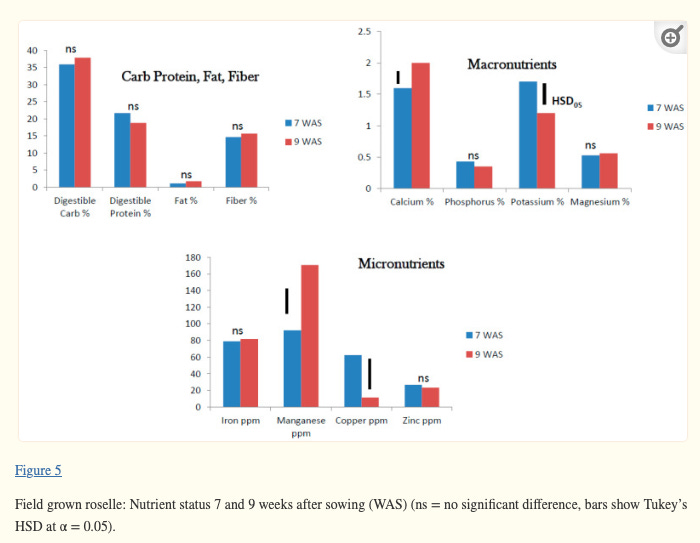
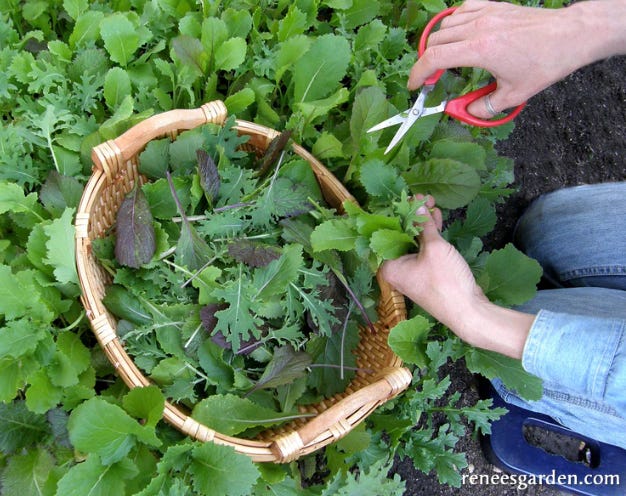


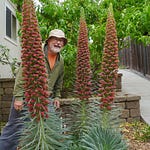

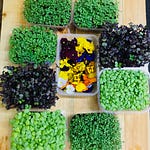
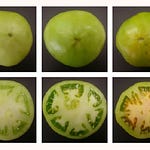

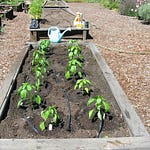
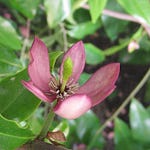
Share this post